
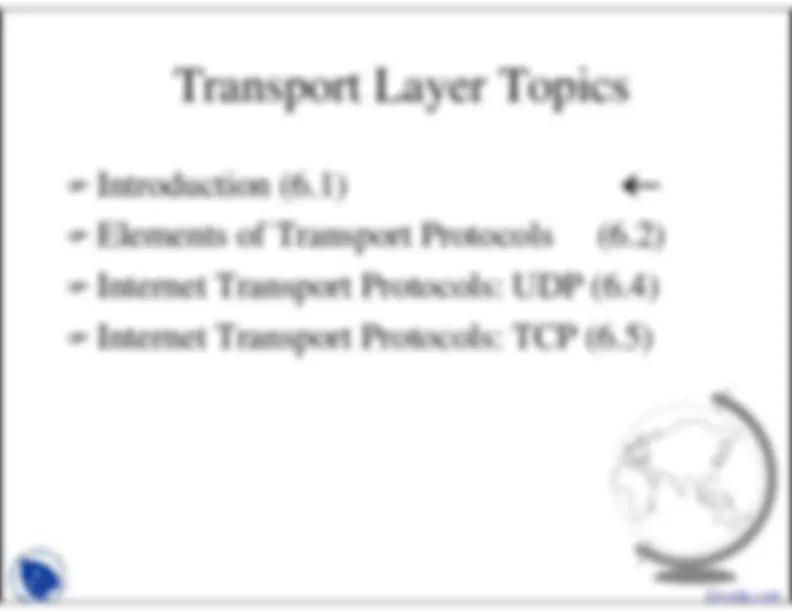
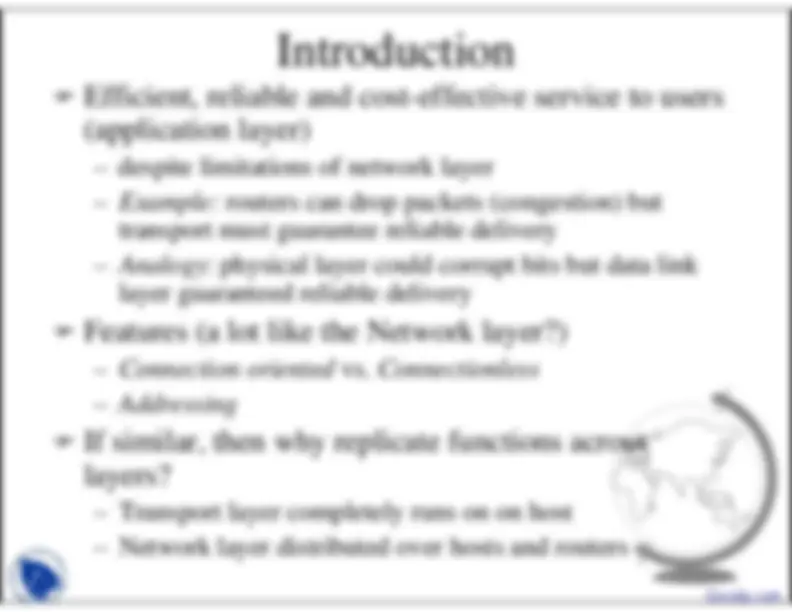
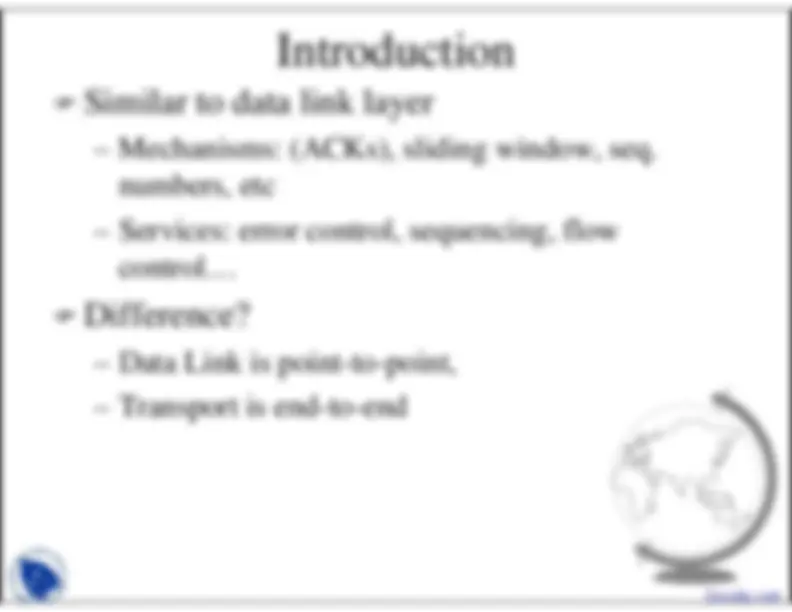
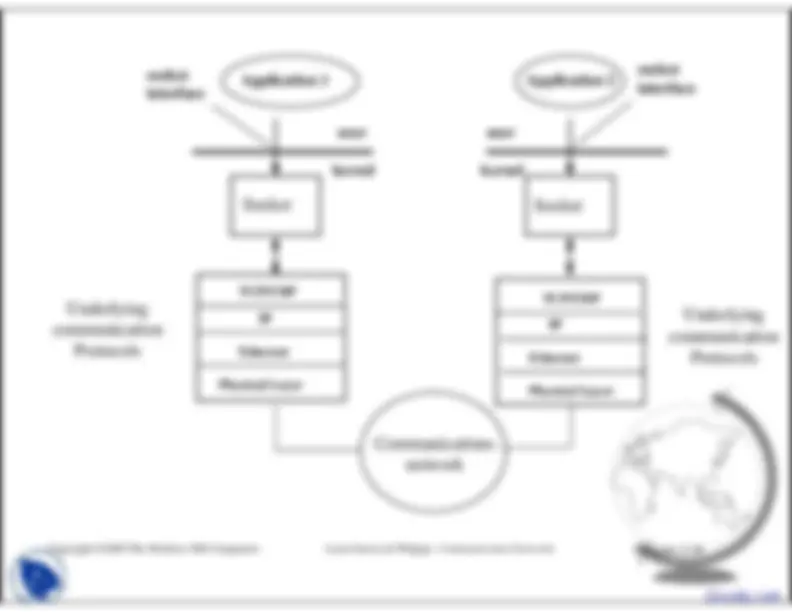
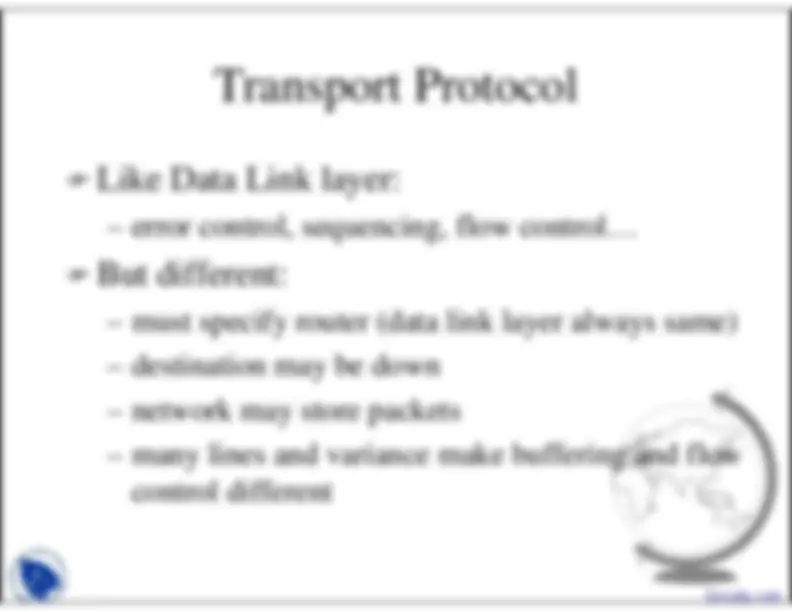
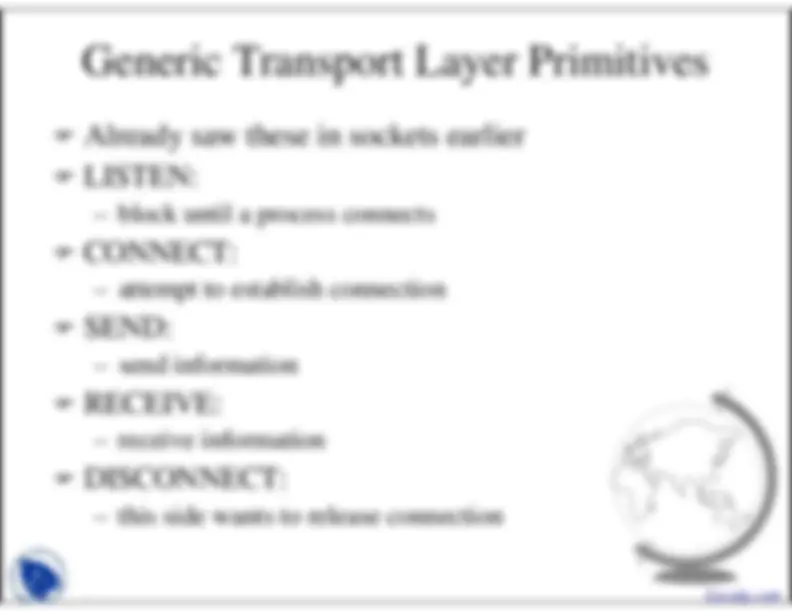
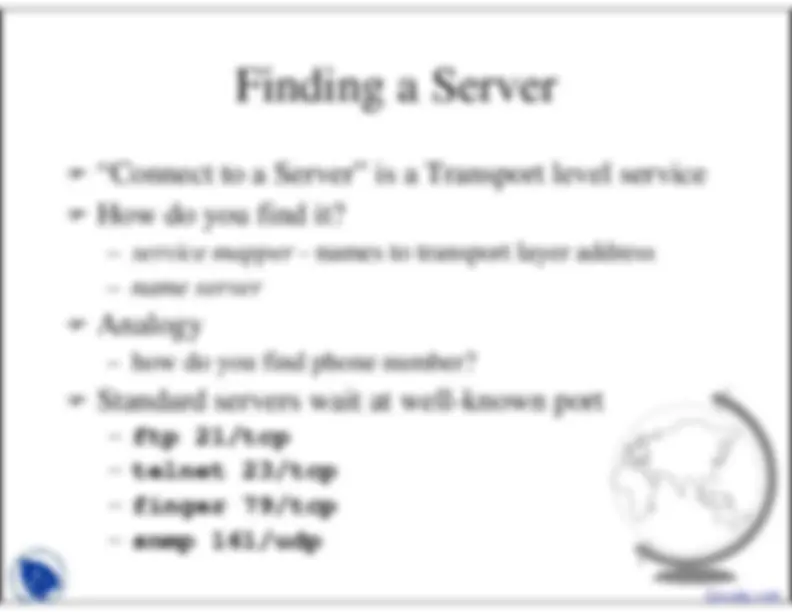
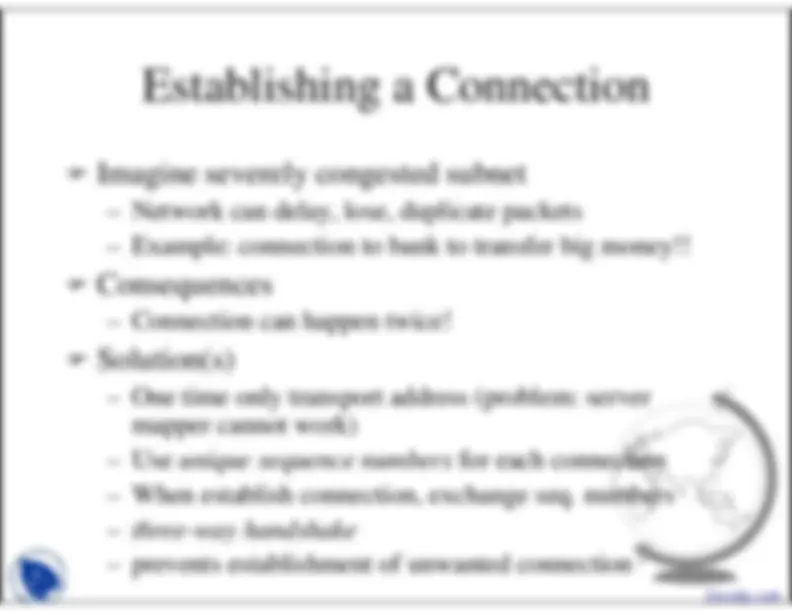
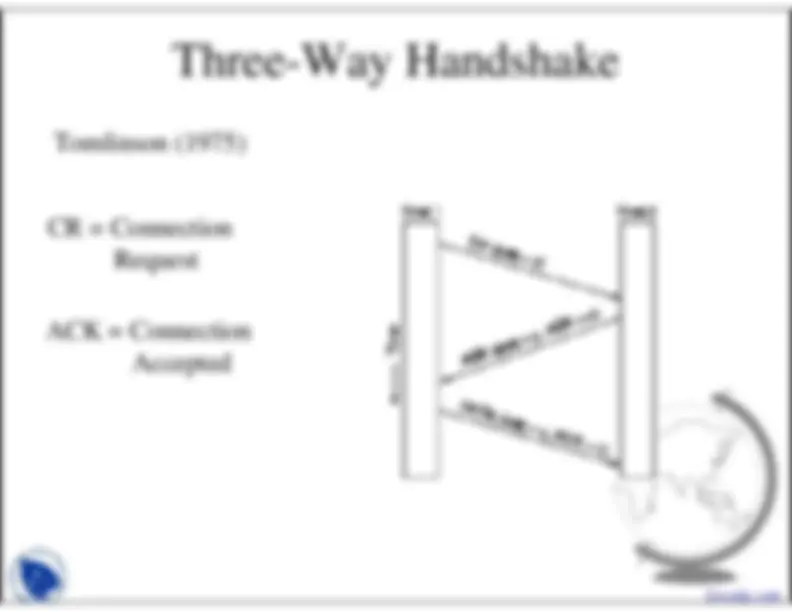
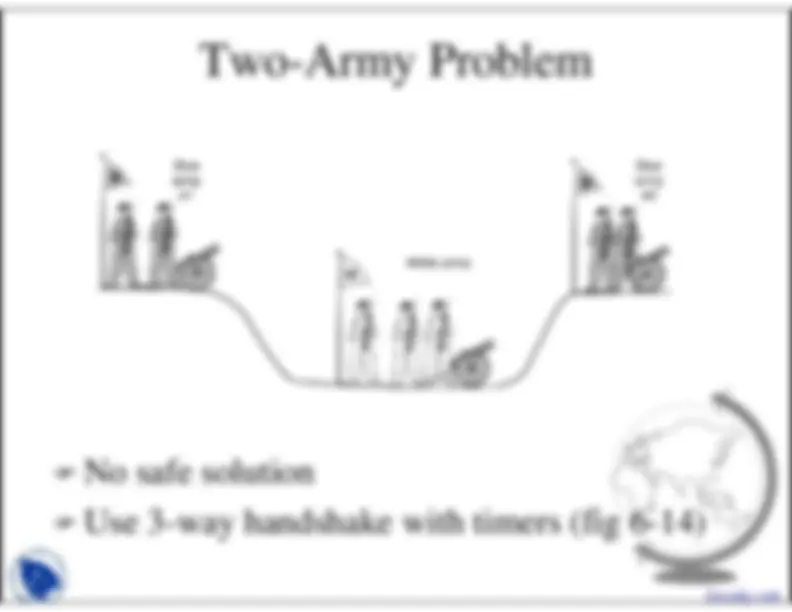
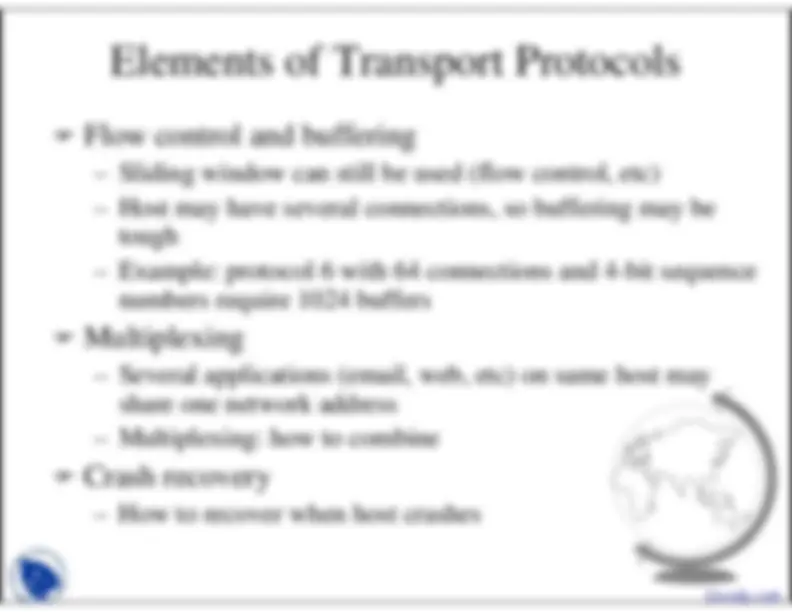


Study with the several resources on Docsity

Earn points by helping other students or get them with a premium plan


Prepare for your exams
Study with the several resources on Docsity

Earn points to download
Earn points by helping other students or get them with a premium plan
Community
Ask the community for help and clear up your study doubts
Discover the best universities in your country according to Docsity users
Free resources
Download our free guides on studying techniques, anxiety management strategies, and thesis advice from Docsity tutors
Main points of Local and Wide Area Networks are: Transport Layer Three, Elements Of Transport Protocols, Internet Transport Protocols, Connection-Oriented, Guarantees, Reliable, Connectionless, Unacknowledged, Best Effort, Short Header Added
Typology: Slides
1 / 19

This page cannot be seen from the preview
Don't miss anything!












)
)
Example:
routers can drop packets (congestion) but
transport must guarantee reliable delivery
Analogy
: physical layer could corrupt bits but data link
layer guaranteed reliable delivery
)
Connection oriented
vs.
Connectionless
Addressing
)
Application 1^ Socket
socketinterface
user kernel
Application 2
user kernel
Underlying communication
Protocols
Underlying communication
Protocols
Communications
network
Socket
socketinterface^ Figure 2.
Copyright ©2000 The McGraw Hill Companies
Leon-Garcia & Widjaja:
Communication Networks
TCP/UDP
IP Ethernet Physical Layer
TCP/UDPIP EthernetPhysical Layer
Generic Transport Layer Primitives
)
)
)
)
)
)
)
)
service mapper
name server
)
)
ftp 21/tcp
telnet 23/tcp
finger 79/tcp
snmp 161/udp
)
)
)
mapper cannot work)
unique sequence numbers
for each connection
three-way handshake
Case 1: delayed duplicateKey: host 1 knows it hasseen ACK before
Case 2: delayedconnection request, ACKKey: Wrong data seq. No.
Elements of Transport Protocols
)
tough
numbers require 1024 buffers
)
share one network address
)